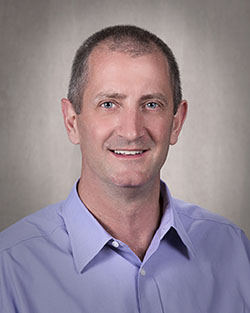Researcher Uncovers Multiple Influences in the Antibiotic Resistance Debate
COLLEGE STATION, Texas – The issue of antibiotic resistance may have only recently become front-page news, but it has always been a concern of those focused on improving public health. Alexander Fleming, a recipient of the 1945 Nobel Prize in Medicine for his discovery of penicillin, warned during his acceptance speech for the award of the possibility of resistance developing if antibiotics were used inappropriately. Nearly seventy years later, his cautionary words and those of other public health experts have become a troublesome reality.

ABR has developed over time similar to “a 40- or 50-year smoldering fire,” said Morgan Scott, a professor in the Department of Veterinary Pathobiology at the Texas A&M College of Veterinary Medicine & Biomedical Sciences. Although antibiotic misuse and overuse in humans and animals has stoked that fire and shortened the time between introduction of a given antibiotic and formation of resistance, bacteria would have eventually developed a tolerance for the drugs even with thoughtful antibiotic use. “When it comes to antibiotic use and bacterial resistance, the only thing we really know for certain is that less use is better; however, zero use is clearly not an option,” Scott said.Antibiotic resistance (ABR) develops when an antibiotic drug loses its effectiveness against bacteria. Through genetic mutation and selection, bacteria can evolve defenses against a given antibiotic. Some “superbugs,” such as methicillin-resistant Staphylococcus aureus (MRSA), require difficult, costly treatment; in some cases, treatment may not even be possible or feasible.
Scott’s research in antibiotic use and resistance began in biomedical science and epidemiology, but soon included work in other fields as his interest in the subject expanded.
“Most of my research has been on studying the use of antibiotics and the resistance and potential risk to public health that result,” he said. “I’ve used a multitude of scientific approaches from molecular biology to ecology and everything in between, and I’ve looked at the changing risk that is associated with different uses of different antibiotics and different regimens. But behind all of that was this nagging suspicion in the back of my mind that no matter what we find, none of it will matter unless we actually understand what motivates people to use antibiotics in the first place, what the barriers are to any potential behavioral change.”
One aspect of Scott’s research, in collaboration with Dr. Alex McIntosh, professor in the Department of Sociology at Texas A&M University, examined the social psychology of antibiotic use among veterinarians. They found that several factors influenced why and how antibiotics are used, including policy, economics, social norms regarding treatment, and a belief that antibiotics are “a good thing to do.”
“When you start understanding the behavior, you start to realize that the aggregate that defines the perceived behavioral constraint is the policy and the regulations that oversee the use of antibiotics as well as the unwritten policy of why people do what they do,” said Scott.
Scott, along with collaborators at Texas Tech and Hull University in the United Kingdom, is now looking at systems approaches as ways to understand policy and how it can be structured to include as many viewpoints as possible. They have identified that numerous “stakeholders”-including physicians, patients, veterinarians, livestock producers, pharmaceutical companies, public health agencies, and healthcare and consumer advocacy groups-have both an interest and role in countering ABR. This dynamic has the potential to facilitate an unofficial town-meeting style of democracy among the stakeholders that would allow each group to have a direct impact on the creation and implementation of ABR policy.
However, despite their mutual interest in combating resistance, members of these stakeholder groups are not always in agreement: one group suggesting that antibiotics are overused, and the other group countering by saying that the current use of antibiotics is essential to preserve health. According to Scott, this division appears to be growing.
“I see the separation of thoughts, ideas and opinions,” Scott said. “It is a given that we must work together toward a well thought out, coordinated response to ABR.” He likened the use to “drawing down a finite resource that has to be carefully managed for maximum benefit to both the individual and community.”
“As you use more and more antibiotics, you will have fewer and fewer bacteria that are susceptible,” he said. “My use today will diminish in some way your use in the future; these are the economics of a finite resource.”
Scott strongly believes that this divide should be bridged by mutual understanding in the interest of finding workable solutions for dealing with ABR.
“I would like both groups to step back and see aspects of the other side’s argument that might hold some validity and should be considered,” Scott said. “I think there’s far more benefit to having reasonable people communicating to the majority of those who consume and feel comfortable with the products. Transparency is a key to successfully managing ABR.”
The problem presented by ABR arose slowly and through multiple decisions and actions. Creating policy to counter that problem will also require numerous decisions and then implementation in order to be successful.
“We always need to seek alternatives to antibiotics because of the documented potential for any antibiotic to select for resistance to almost any other antibiotic,” said Scott.


